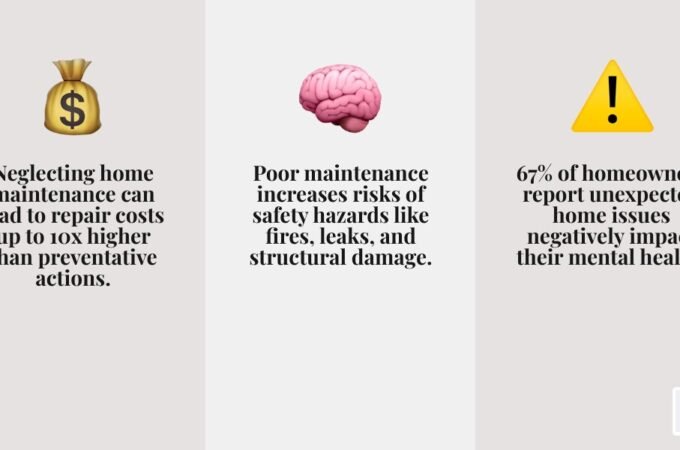
The Wellness Home Blueprint: Easy Daily Rituals for a Cleaner, Safer, and Healthier Living Space
Table of Contents
ToggleKey Takeaways
- Small daily cleaning habits significantly reduce household dust, allergens, and bacteria, promoting better health and a more comfortable living environment.
- Developing consistent routines makes cleaning manageable and prevents the buildup of clutter and grime.
- Eco-friendly products and involving all household members support both wellness and sustainability for families.
Why Cleaning Matters for Health
Maintaining a clean home is more than just appearance, as it has a direct impact on your health and well-being. Clean spaces reduce your exposure to dust, pet dander, mold spores, and bacteria. According to findings from the National Institutes of Health, frequent home cleaning is strongly linked to a reduced risk of allergies and respiratory infections, particularly among children and individuals with asthma. Homes that stay tidy are less likely to harbor mold or allow dust mites to proliferate. This is especially crucial during high pollen seasons or when outdoor pollution levels rise and people spend increased time indoors.
Even subtle improvements, such as a quick wipe-down of kitchen counters or routine floor cleaning, can make an immediate difference in the overall feel of every room. Households looking to streamline these benefits often consider services such as Snohomish County house cleaning for consistently reliable results, but establishing practical habits at home is a solid foundation for wellness. Studies have consistently shown that cleaner living spaces contribute to reduced anxiety, improved sleep, and a better overall mood among everyone in the household.
Daily Habits That Make a Big Difference
Creating a clean and inviting home doesn’t mean spending countless hours every single day on tedious chores and tasks. Instead, integrating a consistent routine of small, simple habits into your daily life is both entirely achievable and surprisingly powerful. To begin this journey toward a cleaner home environment, start by making your bed as soon as you get up in the morning. Research suggests this simple act has a significant psychological effect, as it sets a positive tone of order and discipline for the day ahead and effectively discourages clutter accumulation in the bedroom space. Additionally, wiping down your kitchen counters and tables after every meal not only keeps all surfaces free of annoying crumbs and food residue, but it also plays a vital role in preventing pests and harmful bacteria from taking hold in your home.
Another highly effective practice to consider is removing shoes at the door upon entering your home. Outdoor shoes can often carry unwanted dirt, pollen, harmful chemicals, and even various forms of bacteria. By creating a designated spot for shoes near the entryway, you can drastically reduce the amount of debris that ends up on your floors and carpets. Furthermore, try dedicating just five minutes each evening to tidying up your living areas. Use this time to pick up out-of-place items, organize shoes neatly, or straighten the cushions on your sofa. By keeping messes under control daily, households can successfully avoid overwhelming and exhausting cleaning marathons, ultimately maintaining a fresher and more pleasant atmosphere at all times.
Improving Indoor Air Quality
Air quality is a hidden, yet crucial, aspect of home health. The air inside a home can harbor allergens, volatile organic compounds (VOCs), pet dander, and mold spores—sometimes at higher concentrations than what is found outdoors. One of the simplest ways to improve indoor air quality is to ventilate your home regularly. Open the windows for at least ten minutes a day, even in cool or humid weather. It allows airborne pollutants to escape and brings in fresh air.
- Ventilate by opening windows or using exhaust fans, especially after cooking or cleaning.
- Vacuum using HEPA filters, which are highly effective at trapping fine dust and allergens.
- Use damp microfiber cloths for dusting to prevent dust from being thrown into the air.
- Choose non-toxic cleaning solutions, such as vinegar, lemon, and baking soda, for most surfaces.
According to the EPA’s guide on indoor air quality, adopting these habits, combined with effective moisture management, can significantly reduce allergy symptoms and create a healthier living space. Indoor plants can also be beneficial, but they require proper care to prevent mold growth.
Identifying and Tackling Germ Hotspots
Every home hides “germ zones”—surfaces that are touched frequently or exposed to moisture, making them ideal for bacteria and viruses. Bathroom taps, light switches, refrigerator handles, and doorknobs gather germs surprisingly fast. Make it part of your routine to disinfect these common hotspots at least once a week with either antibacterial sprays or simple homemade alcohol solutions (at least 70% alcohol for effectiveness). This practice can significantly reduce the risk of colds, flu, and gastrointestinal infections circulating within the home.
Pay special attention in the kitchen, where cutting boards, sponges, and dishcloths quickly accumulate bacteria from raw food and hands. Clean these items regularly by running sponges through the dishwasher or replacing them frequently. Cutting boards should be washed thoroughly in hot, soapy water after every use, especially after contact with raw meat. These efforts safeguard your family from foodborne illnesses while ensuring kitchen sanitation stays manageable.
Getting the Whole Family Involved
Maintaining a clean and organized home should not be the sole responsibility of just one person. When every member of the household pitches in and contributes to cleaning efforts, the task becomes significantly less daunting. It transforms into a collaborative endeavor that fosters teamwork and imparts essential life skills. It is beneficial to assign chores in a manner that suits each person’s age and individual ability level. For instance, young children can participate by helping to tidy up their toys or wipe down low surfaces that are within their reach. Meanwhile, older children are typically capable of managing tasks such as vacuuming, washing dishes, or sorting laundry. As for teenagers, they can take on more complex and demanding responsibilities, which may include cleaning bathrooms or mopping the floors of shared living areas.
To make the cleaning process even more engaging and efficient, consider creating a visible chore checklist or utilizing a smartphone application that can gamify the entire process. This approach not only adds an element of fun but also introduces a sense of accountability among family members. Moreover, considerable research supports the notion that established family cleaning routines can significantly promote a sense of accomplishment among individuals, alleviate parental stress, and reinforce positive habits in children. Ultimately, these skills are valuable and tend to carry over into adulthood, thereby benefiting the entire family dynamic.
Eco-Friendly Cleaning Options
As public awareness grows regarding the various chemicals commonly found in household cleaning products, many families are increasingly turning to more sustainable and environmentally friendly solutions. One popular option is the use of microfiber cloths, which have been shown to effectively trap dust, dirt, and bacteria with only minimal amounts of cleaning agents, making them an excellent choice for reducing waste since they can be reused many times before needing replacement. Additionally, choosing refillable spray bottles and concentrated cleaning formulas significantly helps minimize plastic use, further contributing to a reduction in environmental impact. Furthermore, plant-based or biodegradable cleaners offer powerful cleaning results while avoiding harsh chemical residues and limiting ecological harm.
Moreover, homemade cleaning solutions can be just as effective and often consist of simple, readily available ingredients. For instance, baking soda serves as an effective yet gentle scrubbing agent, while vinegar is well-known for its ability to cut through grease. Lemon, on the other hand, acts as both a deodorizer to eliminate unpleasant odors and a natural stain remover. By switching to these natural and effective cleaning options, families not only help protect the planet but also minimize skin and respiratory irritation for sensitive individuals in their households. It is essential to recognize that small changes and thoughtful choices truly accumulate over time, ultimately leading to a healthier lifestyle for both your family and the environment as a whole.
A Quick, Practical Cleaning Checklist
- Dust bookshelves, fan blades, electronics, and baseboards at least once a week.
- Wipe and sanitize kitchen surfaces and sinks every day, especially after cooking.
- Empty household trash cans regularly to avoid lingering odors and attractants.
- Launder bedding and bathroom towels every 1-2 weeks to prevent the buildup of allergens and bacteria.
- Vacuum carpets and sofas at least weekly, more often in high-traffic areas or if you have pets.
Personalize this checklist to suit your household size, pets, or specific needs. Involving everyone in maintaining these habits prevents cleaning from becoming overwhelming and ensures your home always feels inviting and fresh.
Tips to Stay Motivated Over Time
Staying deeply committed to these routines and habits isn’t always straightforward, especially when juggling the demands of busy schedules that life often presents. To make the cleaning process more enjoyable and less of a burden, consider playing your favorite upbeat music or engaging podcasts that uplift your mood while you work. Additionally, using a timer can transform the experience by challenging you to see how quickly you can complete various tasks, making it feel more like a fun game rather than a tedious chore. Sometimes, adding a competitive twist can boost the motivation levels of everyone involved, making the process more engaging and interactive. You should also reward yourself after completing household chores with a well-deserved treat or some relaxation time as positive reinforcement to acknowledge your efforts and achievements. Remember that achieving a clean and healthy home environment is not solely about striving for perfection, but about making steady progress over time. Allow yourself the necessary flexibility, do not hesitate to ask for help from family members when needed, and make sure to celebrate even the small victories along the way. These straightforward yet consistent habits will gradually transform cleaning from a mere chore into a meaningful act of self-care, ultimately creating a peaceful and inviting retreat where your family can not only thrive but also relax together in harmony.
Lynn Place is Vice President of Marketing for SolvChem Custom Packaging Division. She has 30 years of professional experience in the manufacturing industry and specializes in consumer packaged goods, new product development and strategic planning.






